1.
Introduction
The study of Diophantine equations plays a very important role in number theory, and the integer solutions of Diophantine equations are widely used in cryptography and coding theory. Silverman [1] studied the parametric solution of equation
Li and Yuan [2] proved that the simultaneous Pell equations possess at most one positive integer solution under certain conditions.
A Diophantine equation of the form
is called a multivariate linear Diophantine equation, where s,a1,a2,⋯,at are nonzero integers and t≥2. It is well known that for any given nonzero integers a and b, there are two integers u and v such that
where (a,b) represents the greatest common divisor of a and b. Now we introduce some symbols associated with Eq (1.1) as follows:
That is, there exist integers u1,u2,⋯,ut and v2,v3,⋯,vt−1 such that
Li [3] gave the structure of the general solution of the multivariate linear Diophantine equation.
Theorem 1.1. ([3]) The multivariate linear Diophantine Eq (1.1) has solutions if and only if dt|s. Furthermore, if dt|s and t≥4, then the general solutions of Diophantine Eq (1.1) are
where si(1≤i≤t−1) are arbitrary integers and δ=sd−1t,ˉaj=ajd−1j for 2≤j≤t.
Let Fq be a finite field of q elements with characteristic p, and Fqn be its extension of degree n, where p is a prime number and n ≥ 2 is an integer. Zhu et al. [4] obtained an explicit formula for the number of solutions to the equation
over Fq. Zhao et al. [5] found an explicit formula for the number of solutions of the two-variable diagonal quartic equation
over Fq.
A basis of Fqn over Fq of the form {α,αq,⋯,αqn−1} is called a normal basis of Fqn over Fq, and α is called a normal element of Fqn over Fq. An irreducible polynomial f(x) ∈ Fq[x] is called a normal polynomial if all the roots of f(x) are normal elements of Fqn over Fq. The trace of α is defined as
and the trace of f(x) is defined to be the coefficient of xn−1. Theorems 1.1 and 1.2 below give a simple criterion to check when an irreducible polynomial is a normal polynomial.
Theorem 1.2. ([6]) Let n=pe with e≥1. Then an irreducible polynomial
is a normal polynomial if and only if a1≠0.
Theorem 1.3. ([7]) Let n be a prime different from p, and let q be a primitive root modulo n. Then an irreducible polynomial
is a normal polynomial if and only if a1≠0.
In 2001, Chang([8]) et al. furthermore proved that the conditions in Theorems 1.1 and 1.2 are also necessary.
Theorem 1.4. ([8]) If every irreducible polynomial
with a1≠0 is a normal polynomial, then n is either a power of p or a prime different from p, and q is a primitive root modulo n.
In 2018, Huang et al. [9] presented a unified proof of Theorems 1.1–1.3 by comparing the number of normal polynomials and that of irreducible polynomials over Fq.
The factorization of xn−1 and its irreducible factors are closely related to the normal elements in Fqn over Fq (see [10, Section 2]). Denote by F(xn−1) the set of all distinct monic irreducible factors of xn−1 in a given finite field, Φr(x) a r-th cyclotomic polynomial, and φ(⋅) the Euler function. Write
where e≥0 is an integer, p is the characteristic of Fq, and p∤m. Below are the known results for
Theorem 1.5. ([11]) The following statements are equivalent:
(a) |F(xn−1)|=1.
(b) F(xn−1) = {x−1}.
(c) n=pe.
Theorem 1.6. ([11]) The following statements are equivalent:
(a) |F(xn−1)|=2.
(b) F(xn−1) = {x−1,1+x+⋯+xm−1}.
(c) m is a prime different from p, and q is a primitive root modulo m.
We summarize the five theorems above into the theorem below:
Theorem 1.7. The following statements are equivalent:
(a) Every irreducible polynomial of degree n over Fq with a nonzero trace is a normal polynomial.
(b) F(xn−1)⊆{x−1,1+x+⋯+xn−1}.
(c) (c1) n=pe, or
(c2) n is a prime different from p, with q being a primitive root modulo n.
Cao [11] presented a new and unified proof of Theorem 1.6 and also extended Theorem 1.6. In this paper, we give the necessary and sufficient condition for the polynomial xn−1 to have s different irreducible factors for a given positive integer s.
2.
Preliminaries
Lemma 2.1 indicates that factorization of xn−1 in finite fields is closely related to the cyclotomic polynomials.
Lemma 2.1. ([12]) Let Fq be a finite field of characteristic p, and let n be a positive integer not divisible by p. Then
Lemma 2.2. ([13]) Let l be the order of a modulo m, an≡1 (mod m), then l∣n.
Lemma 2.3. ([12]) Let Fq be a finite field and n a positive integer with (q,n)=1. Then the cyclotomic polynomial Φn(x) factors into φ(n)d distinct monic irreducible polynomials in Fq[x] of the same degree d, where d is the order of q modulo n.
Lemma 2.4 is the well-known theorem about the existence of primitive roots.
Lemma 2.4. ([14]) Let n be a positive integer. Then n possesses primitive roots if and only if n is of the form 2, 4, pα, or 2pα, where p is an odd prime and α is a positive integer.
By Lemmas 2.3 and 2.4, we have the following lemma:
Lemma 2.5. The cyclotomic polynomial Φn(x) is irreducible over Fq if and only if n=2,4,pα,2pα, and q is a primitive root modulo n.
We define vp(x) to be the greatest power in which a prime p divides x, that is, if vp(x)=α, then pα|x but pα+1∤x. The following lemma is called the lifting the exponent lemma (LTE):
Lemma 2.6. ([15]) Let x and y be (not necessarily positive) integers, n be a positive integer, and p be an odd prime such that p|x−y and none of x and y is divisible by p. We have
Lemma 2.7. Let p be an odd prime and g be a primitive root modulo p2, with (g,p)=1. Then g is a primitive root modulo pl(l≥1).
Proof. We first prove that g is a primitive root modulo pl(l≥2) by induction on l. Let g be a primitive root modulo pl. The order of g modulo pl+1 is d. We have
which shows that
or
We next prove that
According to Euler's theorem, we have
there exists an integer k such that
since g is a primitive root modulo pl, we have
Obviously, for l≥2, we have
and
which shows that
where t is an integer and (k,p)=1. It follows that
Therefore
and g is a primitive root modulo pl+1.
We next use the LTE to prove that g is a primitive root modulo p. The Euler's theorem shows that
since g is a primitive root modulo p2, we have
Let h be the order of g modulo p, then h|φ(p). Similarly, we can obtain
Let x=gh, y=1, then (p,gh)=1, p|gh−1. By the LTE, we have
which shows that
if h<φ(p), then ph<φ(p2), a contradiction. Thus h=φ(p), g is a primitive root modulo p. □
Lemma 2.8. Let g be a primitive root modulo pl. Then g is a primitive root modulo 2pl, where g is odd and p and l are the same as mentioned above.
Proof. Let s be the order of g modulo 2pl. Then
So we have
Since g is a primitive root modulo pl, we have φ(pl)|s and hence φ(2pl)|s. So
and g is a primitive root modulo 2pl. □
3.
Main result
Combining Lemmas 2.1 and 2.3, we can calculate the number of different irreducible factors for xn−1 over Fq. Let m be a positive integer,
be its prime decomposition. If
where e≥0 is an integer, and p is the characteristic of Fq with p∤m. Then we can calculate that
where dm′ denotes the order of q modulo m′. Note that there are ∏lk=1(αk+1) items in the summation, where ∏lk=1(αk+1) is the number of factors of m.
Now assume that s and m are given positive integers, m1,⋯,mt are the t factors of m. Thus, we have
If xn−1 factors into s distinct irreducible polynomials in Fq[x], then
there are t items in the summation, the necessary and sufficient condition for
is determined as follows:
Observe φ(mi)dmi (i=1,2,⋯,t), and φ(mi) are known; with the difference of q, the values of dmi will also change, that is, the values of φ(mi)dmi will change in the different Fq. Therefore, the t items in (3.1) can be regarded as t variables, and (3.1) can be regarded as the Diophantine equation with t variables
Remark 3.1. Combining Lemma 2.2 and Euler's theorem, we know that φ(mi)dmi (i=1,2,⋯,t) are positive integers. So we only need to consider the positive integer solutions of (3.2).
Remark 3.2. The positive integers s and t satisfy t≤s. Otherwise, if t>s, then it follows from Lemmas 2.1 and 2.3 that
Remark 3.3. As we all know
is a factor of xn−1, and x−1 is irreducible over Fq; the order of q modulo 1 is d1=1. Thus, at least one positive integer solution of (3.2) whose value is 1.
We can find the positive integer solutions of (3.2). Without loss of generality, we suppose that
is the positive integer solution of (3.2), thus we have
If there exists q such that the order of q modulo mi is
then it follows from Lemma 2.3 that Φmi(x) factors into
distinct monic irreducible polynomials over Fq of the same degree
Therefore, we have
that is, xn−1 factors into s distinct irreducible polynomials over Fq.
In conclusion, we have the following result:
Theorem 3.4. (Main result) Let Fq denote the finite field of q elements with characteristic p. Let p be a prime. Let
with e≥0, p∤m. Let s be a positive integer. The t factors of m are m1,m2,⋯,mt and dmi denotes the order of q modulo mi. Then
if and only if
is a solution to the Diophantine equation
Proof. We first assume that
is the solution of the Diophantine equation
By Lemmas 2.1 and 2.3, we have
and Φmi(x) factors into
distinct monic irreducible polynomials in Fq[x] of the same degree
Hence, we obtain
Suppose
According to Lemma 2.3, we have
So
is the solution of the Diophantine equation
□
4.
Applications
We apply Theorem 3.4 to deduce Theorem 1.6. Note that Theorem 1.5 is trivial. Recall that
where e≥0 is an integer and p is the characteristic of Fq with p∤m.
For Theorem 1.6
we know that m has two factors; thus, m is a prime different from p,
The unique positive integer solution of the Diophantine equation
is
Since
and by Theorem 3.4, we have
that is, dm=φ(m), q is a primitive root modulo m. It follows from Lemma 2.5 that the cyclotomic polynomial Φm(x) is irreducible over Fq. Thus
The necessary and sufficient conditions for
are given, respectively, below: for
we know that t≤3, where t is the number of factors of m.
Case 1. If m has three factors, then m=r2, where r is a prime different from p.
The unique positive integer solution of the Diophantine equation
is
By Theorem 3.4, we have
that is,
q is a primitive root modulo r and r2. Recall Lemma 2.7: If q is a primitive root modulo r2, then q is a primitive root modulo r. Cyclotomic polynomials Φr(x) and Φr2(x) are irreducible over Fq. Thus
Case 2. If m has two factors, then m=r,
The positive integer solution of the Diophantine equation
is x1=1, x2=2. Hence, we obtain
that is,
the order of q modulo r is φ(r)2. According to Lemma 2.3, the cyclotomic polynomial Φr(x) factors into
distinct monic irreducible polynomials in Fq[x] of the same degree
Thus
In conclusion, we have the following result:
Theorem 4.1. The following statements are equivalent:
(a) |F(xn−1)|=3.
(b) (b1) F(xn−1) = {x−1,f1(x),f2(x)}, where m=r,
(b2) F(xn−1) = {x−1,Φr(x),Φr2(x)}, where m=r2.
(c) (c1) m=r, and the order of q modulo r is φ(r)2.
(c2) m=r2, and q is a primitive root modulo r2.
For
we know that t≤4, where t is the number of factors of m. In the remaining part of this paper, we always assume that r is an odd prime different from p.
If m has four factors, then the possible values of m are r3, 2r, p1p2 or 8, where p1 and p2 are odd primes different from p. The unique positive integer solution of the Diophantine equation
is
Case 1. If m=r3, then
and we have
that is, q is a primitive root modulo rl,l=1,2,3, which requires that q is a primitive root modulo r2. The cyclotomic polynomials Φr(x), Φr2(x), and Φr3(x) are irreducible over Fq. Thus
Case 2. If m=2r, then
and we have
that is, q is a primitive root modulo r and 2r. Recall Lemma 2.8: If q is a primitive root modulo r, then q is a primitive root modulo 2r. The cyclotomic polynomials Φr(x) and Φ2r(x) are irreducible over Fq. Obviously, the order of q modulo 2 is d2=1, and
is irreducible over Fq. Thus
Case 3. If m=p1p2, then
and we have
It follows from Lemma 2.4 that p1p2 has no primitive root, which contradicts
The cyclotomic polynomial Φp1p2(x) is reducible over Fq. Thus
Case 4. If m=8, then
Since 8 has no primitive root, Φ8(x) is reducible over Fq. Thus
If m has three factors, then the possible values of m are r2 or 4. The positive integer solution of the equation
is
Case 1. If m=r2, then
and we have
or
For the former, the order of q modulo r is
and q is a primitive root modulo r2, which is impossible by Lemma 2.7. For the latter, q is a primitive root modulo r, and the order of q modulo r2 is φ(r2)2. It follows that
Thus φ(r)|rφ(r)2. Since r is an odd prime, r2 is not an integer, and the divisibility is not valid.
Case 2. If m=4, then
and we have
that is, the order of q modulo 4 is
The cyclotomic polynomial
factors into
distinct monic irreducible polynomials in Fq[x] of the same degree, d4=1. Thus
If m has two factors, then m=r,
The positive integer solution of the Diophantine equation
is x1=1, x2=3. Hence, we have
that is, the order of q modulo r is φ(r)3. The cyclotomic polynomial Φr(x) factors into three distinct monic irreducible polynomials in Fq[x] of the same degree φ(r)3. Thus
In conclusion, we have the following result:
Theorem 4.2. The following statements are equivalent:
(a) |F(xn−1)|=4.
(b) (b1) F(xn−1) = {x−1,f1(x),f2(x),f3(x)}, where m=r,
(b2) F(xn−1) = {x−1,Φr(x),Φr2(x),Φr3(x)}, where m=r3.
(b3) F(xn−1) = {x−1,x+1,Φr(x),Φ2r(x)}, where m=2r.
(b4) F(xn−1) = {x−1,x+1,x+e1,x+e2}, where m=4, e1 and e2 are integers.
(c) (c1) m=r, and the order of q modulo r is φ(r)3.
(c2) m=r3, and q is a primitive root modulo r2.
(c3) m=2r, and q is a primitive root modulo r.
(c4) m=4, and the order of q modulo 4 is 1.
For
we know that t≤5, where t is the number of factors of m.
If m has five factors, then the possible values of m are r4 or 16. The unique positive integer solution of the equation
is
Case 1. If m=r4, then
and we have
that is, q is a primitive root modulo rl,l=1,2,3,4, which requires that q is a primitive root modulo r2. The cyclotomic polynomials Φr(x),Φr2(x),Φr3(x), and Φr4(x) are irreducible over Fq. Thus
Case 2. If m=16, then
Since 8 and 16 have no primitive root, we know that Φ8(x) and Φ16(x) are reducible over Fq. Thus
If m has four factors, then the possible values of m are r3,8,2r or p1p2. The positive integer solution of the equation
is
Case 1. If m=r3, then
It follows from Lemma 2.7 that
and
that is, q is a primitive root modulo r3, the order of q modulo r2 is φ(r2)2. It follows that
Since q is a primitive root modulo r3, we have
By Lemma 2.6, we have
which is a contradiction. Thus, if m=r3, then
Case 2. If m=8, then
and we have
that is, q is a primitive root modulo 4, which means q is congruent to 3 modulo 4, therefore the order of q modulo 8 is
Φ4(x) is irreducible over Fq, and Φ8(x) factors into
distinct monic irreducible polynomials in Fq[x] of the same degree 2. Thus
Case 3. If m=2r, then
It follows from Lemma 2.8 that
that is, q is a primitive root modulo 2r, and the order of q modulo r is φ(r)2, Φ2r(x) is irreducible over Fq and Φr(x) factors into
distinct monic irreducible polynomials in Fq[x] of the same degree φ(r)2. Thus
Case 4. If m=p1p2, then
Since p1p2 has no primitive root, we have
that is, q is a primitive root modulo p1 and p2, and the order of q modulo p1p2 is φ(p1p2)2, Φp1(x) and Φp2(x) are irreducible over Fq, and Φp1p2(x) factors into
distinct monic irreducible polynomials in Fq[x] of the same degree φ(p1p2)2. Thus
If m has three factors, then the possible values of m are 4 or r2. If m=4, there are at most four distinct irreducible factors for xn−1. Thus
If m=r2, then
The positive integer solutions of the equation
are
For the former, we have
that is, the order of q modulo r is φ(r)2 and the order of q modulo r2 is φ(r2)2, Φr(x), and Φr2(x) factor into 2 distinct monic irreducible polynomials in Fq[x]. Thus
For the latter, it follows from Lemma 2.7 that
that is, q is a primitive root modulo r, and the order of q modulo r2 is φ(r2)3, Φr(x) is irreducible over Fq and Φr2(x) factors into 3 distinct monic irreducible polynomials in Fq[x]. Thus
If m has two factors, then
The positive integer solution of the equation x1+x2=5 is x1=1,x2=4. Hence, we have
that is, the order of q modulo r is φ(r)4. The cyclotomic polynomial Φr(x) factors into four distinct monic irreducible polynomials in Fq[x]. Thus
In conclusion, we obtain the following result:
Theorem 4.3. The following statements are equivalent:
(a) |F(xn−1)|=5.
(b) (b1) F(xn−1) = {x−1,Φr(x),Φr2(x),Φr3(x),Φr4(x)}, where m=r4.
(b2) F(xn−1) = {x−1,x+1,Φ4(x),f1(x),f2(x)}, where m=8,
(b3) F(xn−1) = {x−1,x+1,g1(x),g2(x),Φ2r(x)}, where m=2r,
(b4) F(xn−1) = {x−1,Φp1(x),Φp2(x),h1(x),h2(x)}, where m=p1p2,
(b5) F(xn−1) = {x−1,k1(x),k2(x),r1(x),r2(x)}, where m=r2,
Or F(xn−1) = {x−1,Φr(x),u1(x),u2(x),u3(x)}, where m=r2,
(b6) F(xn−1) = {x−1,v1(x),v2(x),v3(x),v4(x)}, where m=r,
(c) (c1) m=r4, and q is a primitive root modulo r2.
(c2) m=8, q is a primitive root modulo 4, and the order of q modulo 8 is 2.
(c3) m=2r, the order of q modulo r is φ(r)2 and q is a primitive root modulo 2r.
(c4) m=p1p2, the order of q modulo p1p2 is φ(p1p2)2, and q is a primitive root modulo p1 and p2.
(c5) m=r2, the order of q modulo r is φ(r)2 and the order of q modulo r2 is φ(r2)2; or q is a primitive root modulo r and the order of q modulo r2 is φ(r2)3.
(c6) m=r, and the order of q modulo r is φ(r)4.
5.
Examples
In this final section, we provide two examples.
Example 5.1. Let Fq denote the finite field of q elements with characteristic p. Let p be a prime, let r be a prime different from p, and let n=rlpe, with l≥1, e≥0. Denote by F(xn−1) the set of all distinct monic irreducible factors of xn−1 in a given finite field. Given a positive integer s, we consider the special case for
Since n=rlpe,
The unique positive integer solution of the equation
is
where dri denotes the order of q modulo ri (i=0,1,⋯,l). That is, q is a primitive root modulo rj (j=1,2,⋯,l). Recall Lemma 2.7 that if q is a primitive root modulo r2, then q is a primitive root modulo rj (j=1,2,⋯,l). Cyclotomic polynomials Φrj(x) (j=1,2,⋯,l) are irreducible over Fq.
In conclusion, if q is a primitive root modulo r2, then
Example 5.2. We factor polynomial x25−1 into distinct monic irreducible polynomials over F7. Since 25=52,
We first calculate
where 7 is a primitive root modulo 5, thus
is irreducible over F7.
We next calculate
the order of 7 modulo 25 is 4, thus
factors into
distinct monic irreducible polynomials over F7 of the same degree 4,
respectively.
Thus
and
6.
Conclusions
{Let Fq be the finite field of q elements, and Fqn be its extension of degree n. Denote by F(xn−1) the set of all distinct monic irreducible factors of the polynomial xn−1 in the finite field Fq. Given a positive integer s, we use the properties of cyclotomic polynomials in finite fields and results from the Diophantine equations to provide the sufficient and necessary condition for
As an application, we also obtain the sufficient and necessary conditions for
Author contributions
Weitao Xie: the first draft of the manuscript; Jiayu Zhang: preliminaries collection and analysis; Wei Cao: originally raised the problem and commented on previous versions of the manuscript. All authors contributed to the study conception and design. All authors read and approved the final manuscript.
Use of AI tools declaration
The authors declare they have not used Artificial Intelligence (AI) tools in the creation of this article.
Acknowledgments
The authors thank the anonymous referees for their helpful comments that improved the quality of the manuscript. This work was jointly supported by the Fujian Provincial Natural Science Foundation of China (Grant No. 2022J02046), and Fujian Key Laboratory of Granular Computing and Applications (Minnan Normal University).
Conflict of interest
All authors declare no conflicts of interest in this paper.











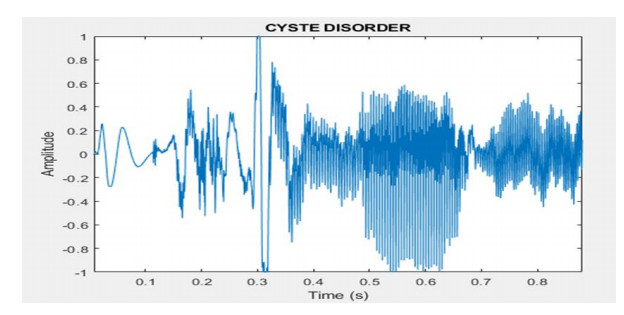
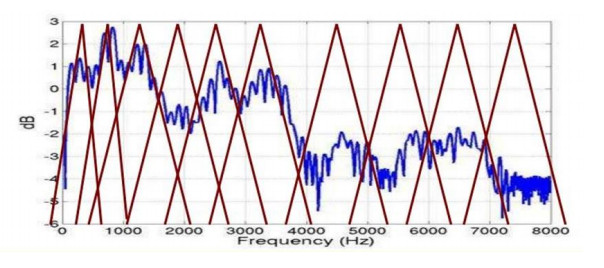
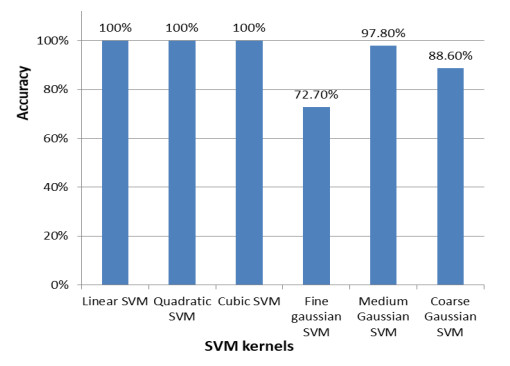
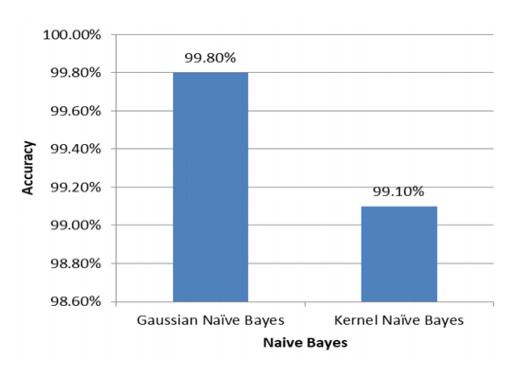
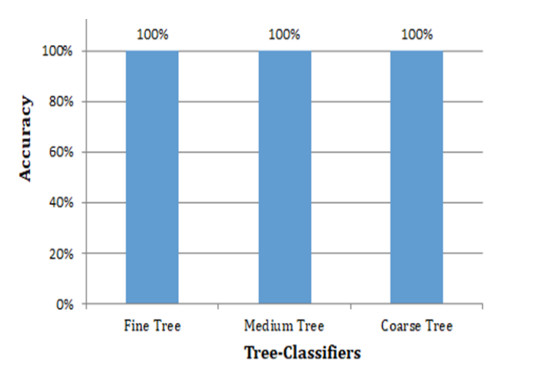
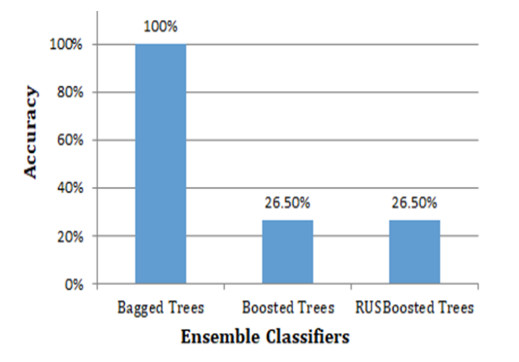


 DownLoad:
DownLoad: